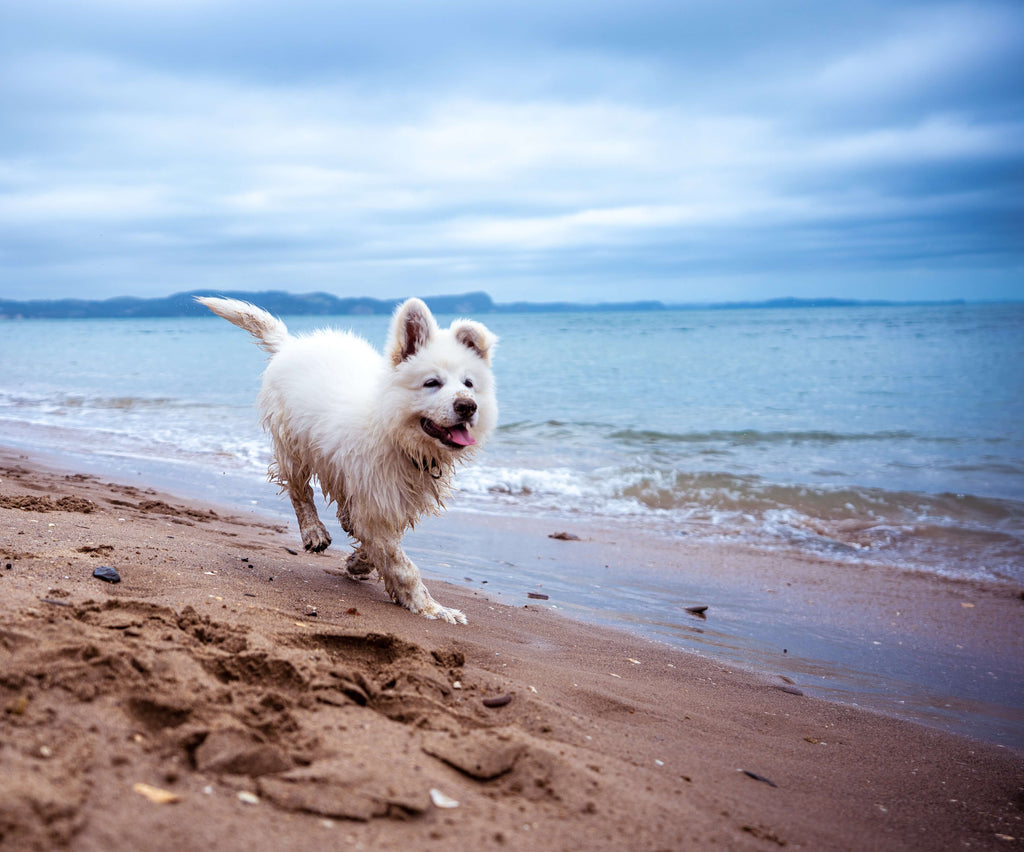
Hot Spots on Dogs: Causes, Treatments and Prevention
Your pooch is a part of the family, so it's no surprise that you get concerned if your doggie looks irritated or uncomfortable.
One common issue with many furry friends is something called a hot spot, which can lead to painful symptoms and even bare, bald spots on your dog's fur. Before you panic, read on to learn more about hot spots on dogs, why they get them, and what you can do to treat it so your pal feels good as new again.
What Are Hot Spots on Dogs?
The term "hot spot" refers to a skin condition found in dogs that most frequently occurs during the hot months of summer. These icky spots are presented as painful sores that can ooze and seem to come out of nowhere when you least expect it.
Hot spots on dogs can spread rapidly, so it's super-important that you recognize the signs and symptoms as soon as possible. Not only are hot spots unsightly, but they can also cause your dog a lot of pain and irritation.
While hot spots do tend to occur more often in the summer, your pooch could get them at any time. Be especially vigilant in the hotter months, but make sure you check your dog regularly all year round just in case.
With the right treatment, most dogs can be free of hot spots with a little bit of TLC and attention. As a pet owner, it's important to understand what causes these nasty skin afflictions in the first place so you can be aware of how to prevent them as much as possible.
The technical term for hot spots is acute moist dermatitis. These awful spots appear in localized areas where the skin is inflamed or has a bacterial infection. They usually show up as a small red spot that initially looks similar to an insect bite.
Unlike the common bug bite, hot spots on dogs can become larger in size and start to spread. As the hot spot gets worse, it becomes red, starts to ooze, and creates a painful lesion on your unsuspecting pooch.
Why Do Dogs Get Hot Spots?
There can be several reasons why your dog may end up stuck with hot spots. Much of it depends on the specific breed of your dog, the condition of his skin, and many other factors that work together to create an irritating hot spot.
When your dog scratches, licks or chews the affected area, the hot spot becomes much worse. Once the skin is extremely irritated, it becomes inflamed and can be vulnerable to bacterial infection. When this happens, it's even itchier to your dog, thus beginning the constant cycle of biting, itching, and scratching.
If your pooch feels itchy on any part of his skin, it has the potential to turn into a hot spot. That's why it's so important to get to the root cause of the itching before it gets out of hand.
Hot spots may be difficult to see for dog breeds such as a long haired dalmatian or a Fluffy Frenchie because they have long fur that will cover the hot spots. Hot spots can be identified for long fur dogs based on how often they are scratching or biting their skin.
There are a few different reasons why your dog might seem itchy and irritated. The most common reason is due to pests like fleas or insect bites from mosquitos. Some dogs are allergic to flea bites which can cause flea allergy dermatitis. Other reasons your BFF might be super-scratchy is that he has food allergies, atopic dermatitis, or a possible ear or skin infection.
If your dog comes into contact with certain irritants, this could also trigger itchiness. Dogs that are stressed or bored may participate in excessive licking, which can lead to hot spots. Dirty or matted coats and trapped moisture on your dog's coat are just a few other factors. If any of these problems remain unmanaged, they can lead to hot spots on your dog.
Certain breeds including golden retrievers, German shepherds, rottweillers, and labradors are more predisposed to getting hot spots thanks to their thick coats. During the summer, your dog is more likely to deal with hots spots thanks to hotter temperatures and higher humidity levels.
Tips to Prevent Hot Spots
You can never be 100% certain that your pup won't have to deal with hot spots. However, there are a few things you can do to try and prevent them from occurring or at least getting worse. If your pooch loves to take a dip and go for a swim, make sure you dry his coat off thoroughly.
Dogs that spend time in the water can retain too much moisture on their coat, which can encourage hot spots to grow. Pay close attention to your dog and if they show signs of stress or irritation, it's time for a visit to the vet. Make sure that your dog isn't dealing with fleas, and maintain their flea and tick medications so that they're pest-free.
Give your dog plenty of time for exercise to help them stay happy and healthy. A brisk daily walk or some extra playtime at the local dog park can prevent your pooch from feeling bored or restless. Make sure your dog is not allergic to certain foods or other substances.
If you notice changes in his behavior, take him to the vet right away. They can help you determine if your pooch may be suffering from an allergic reaction due to changes in diet or lifestyle.
The easiest way to prevent hot spots on your dog is to monitor him carefully and look for any changes in the coat and skin. If you notice unusual markings or areas where your dog tends to lick or scratch a lot, it's time for a closer look. While you can't always prevent hot spots from affecting your dog, being proactive can help lessen the odds or make them less painful.  Summer brings lots of fun in the water, but make sure paws stay clean!
Summer brings lots of fun in the water, but make sure paws stay clean!
How to Treat Hot Spots on Dogs
If you're certain that your dog is dealing with painful hot spots, there are a few easy things you can do to give him some relief.
First, supplement his diet with fatty acids that have anti-inflammatory properties while promoting healthy skin and coat. Natural supplements like omega-3 fatty acids are good options along with natural, nutritious food. Apply aloe vera to your dog's damaged skin to give him some relief from irritation. Aloe can reduce itching, but you need to make sure your dog does not ingest it or else it may cause possible diarrhea and vomiting.
Clip the hair around the hot spots on your dog to prevent the fur from getting matted. Clean any hot spots using a gentle antiseptic solution that's made especially for canines. Your vet may prescribe a topical or oral antibiotic if they diagnose your pooch with a bacterial infection. This can also help to prevent secondary infections from forming. Topical or oral steroids may also be given to help keep inflammation and itching to a minimum.
Clean your dog's fur every day using mild soap and warm water. Apply a medicated wipe or skin cleaning solution every day until the hot spots start to subside. If things get too bad, you may have to give your dog the "cone of shame" to keep them from scratching and licking the area.
Another treatment that may help is to make a spray using a 50/50 mixture of water and apple cider vinegar. The vinegar will soothe itchiness, and it also doubles as an all-natural flea repellant. Win-win! Most hot spots on dogs should heal completely within three to seven days.
If your dog is still having problems after a week or two, it may be time for another visit to the vet just to follow up. If the hot spots don't heal properly, it could lead to even worse problems like an infection.
If your dog is suffering from seasonal allergies that cause hot spots then you can speak with your veterinarian first but many vets will recommend Benadryl for dogs with allergy issues. Other individuals will give their dog Claritin but you should always speak with your vet prior to giving them any medicine.
Key Takeaways About Hot Spots
If you suspect that your dog has a hot spot, don't delay when it comes to giving him treatment. Try a few at-home remedies like apple cider vinegar and water, and see if this gives him some relief. Hot spots that are serious including those that are "weepy," extremely large, or bright red may need the attention of your vet. Make sure that your dog takes any prescriptions exactly as they are directed. Most prescription treatments for hot spots should help your dog get relief within about a week. For extreme hot spots, the treatment could take up to two weeks before it starts to heal.
Don't Let Your Pooch Be a Victim of Hot Spots
While hot spots on dogs are uncomfortable, they're also something you can fix with a little bit of love and care. Always take your pup to the vet if the problem worsens or you notice unusual behavior. Make sure your dog gets regular exercise and look for potential signs of food allergies. A few simple tweaks in your dog's diet could make all the difference when it comes to skin and coat health.




























